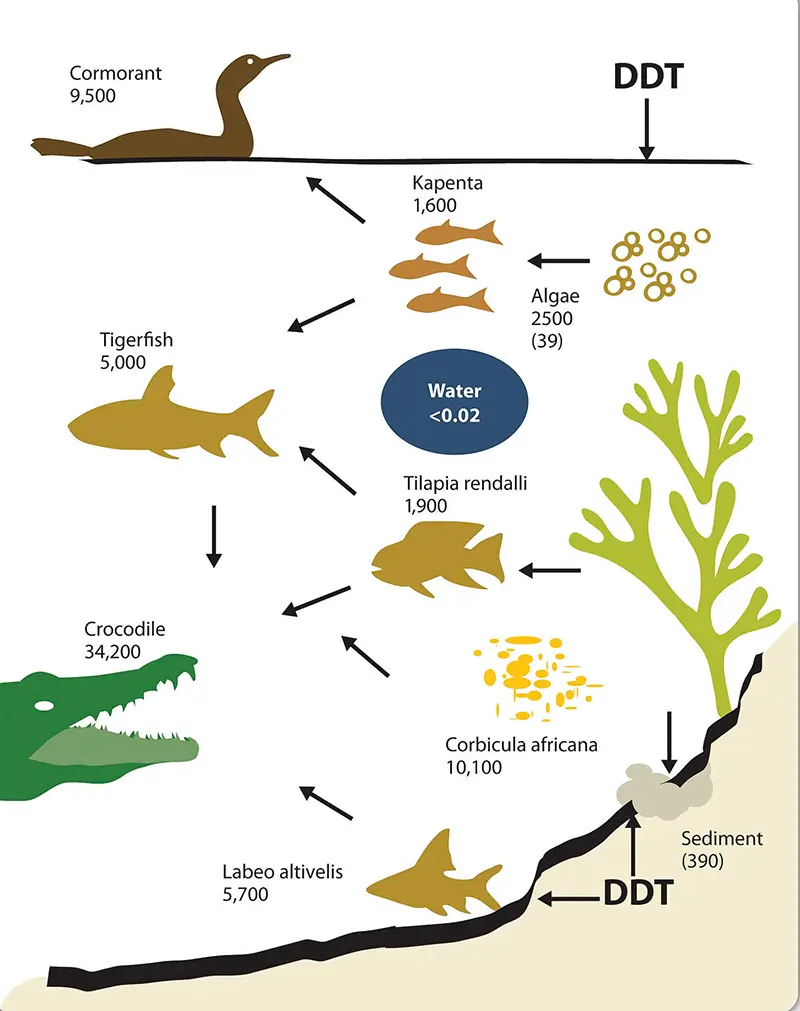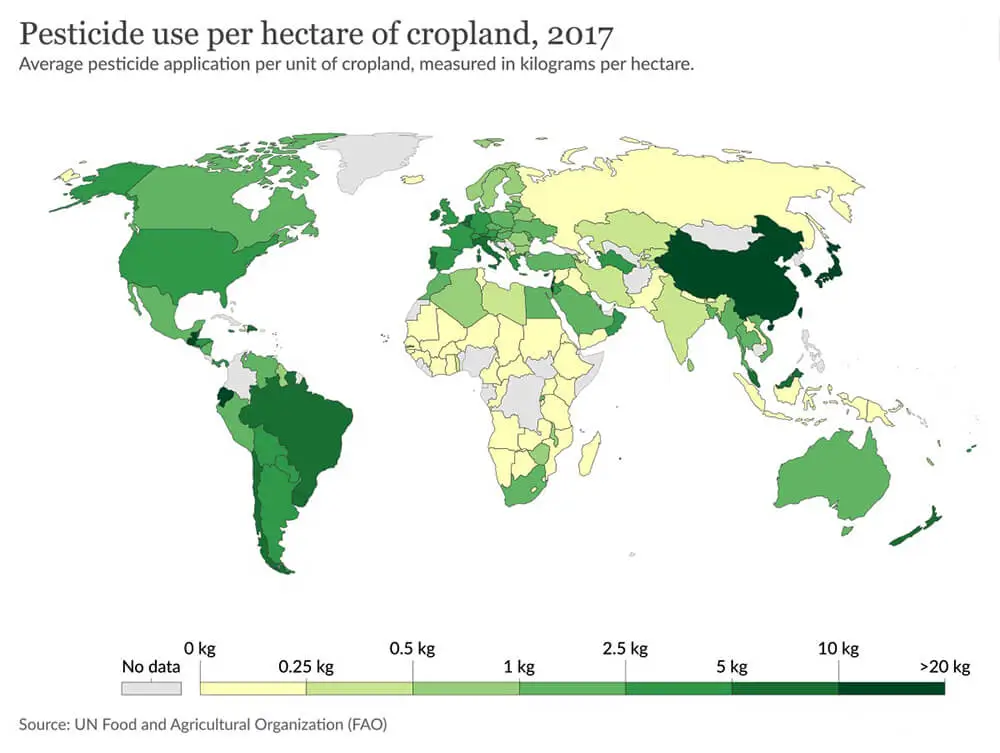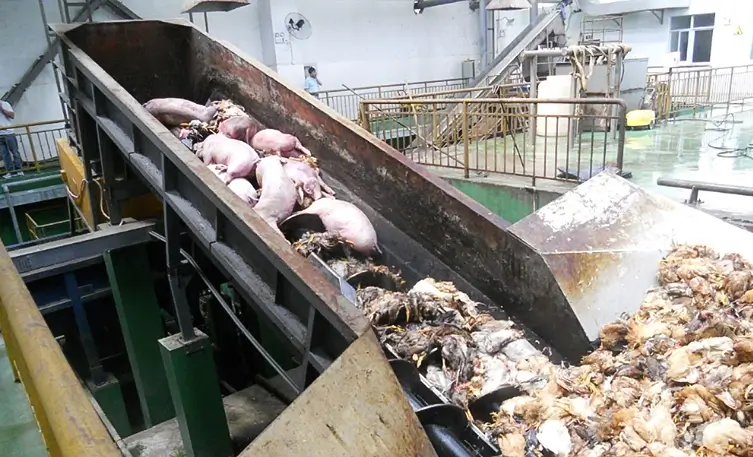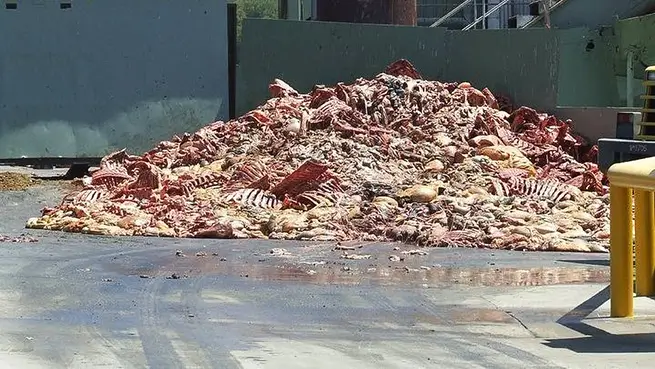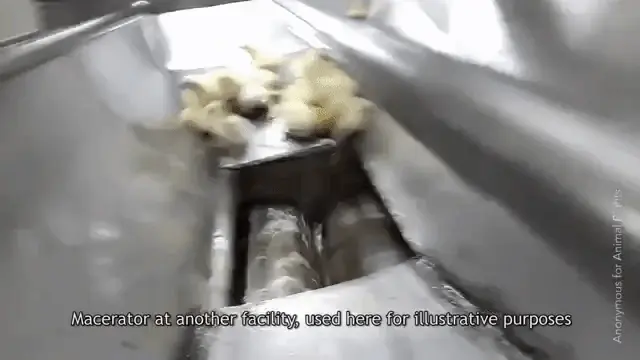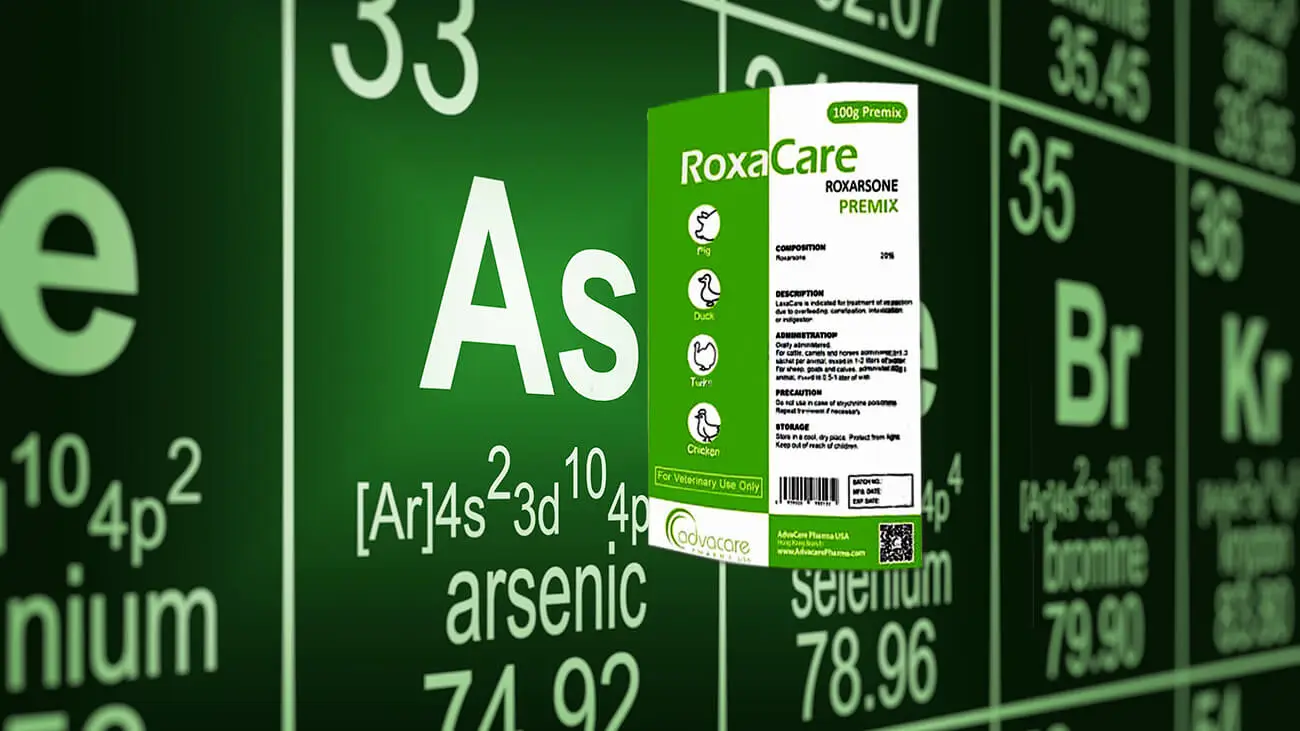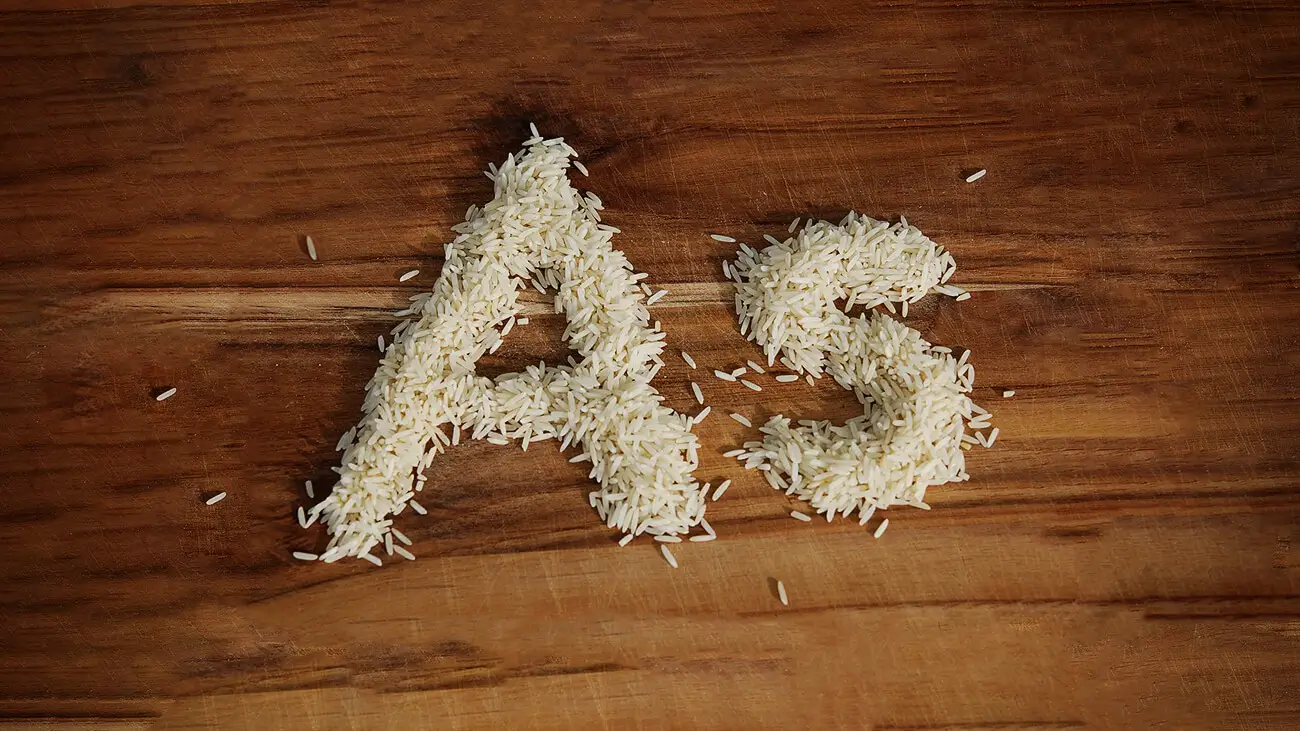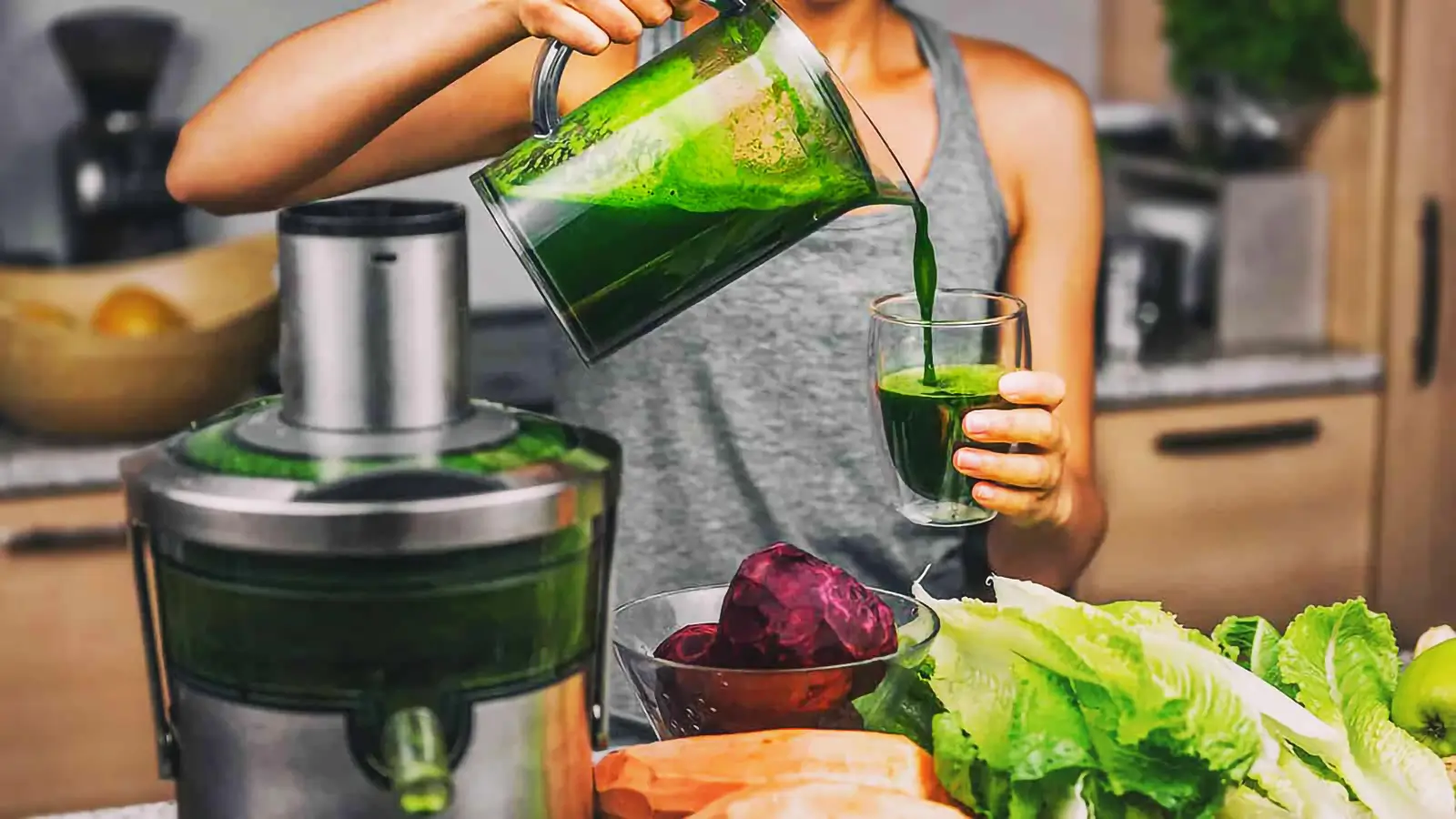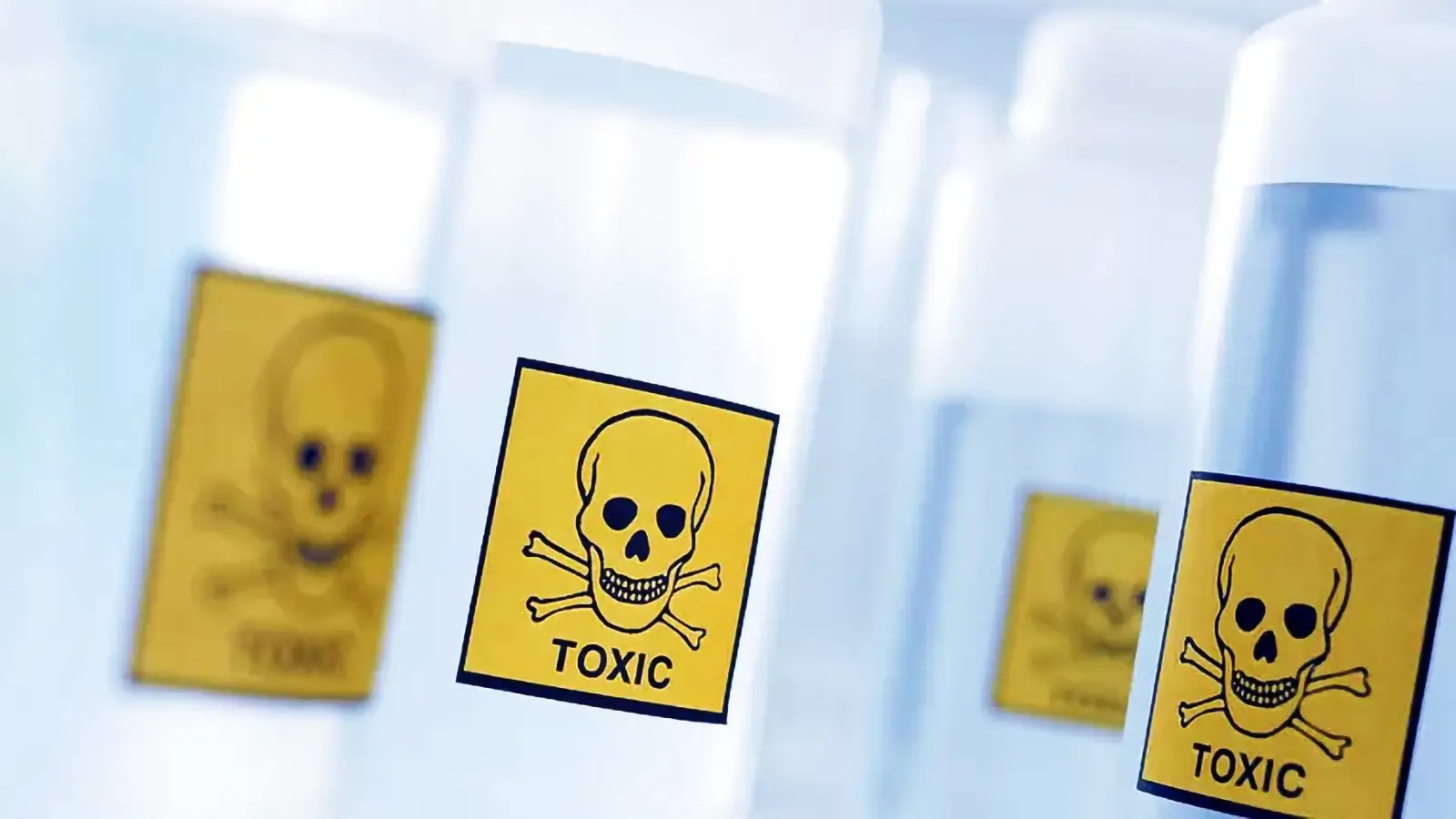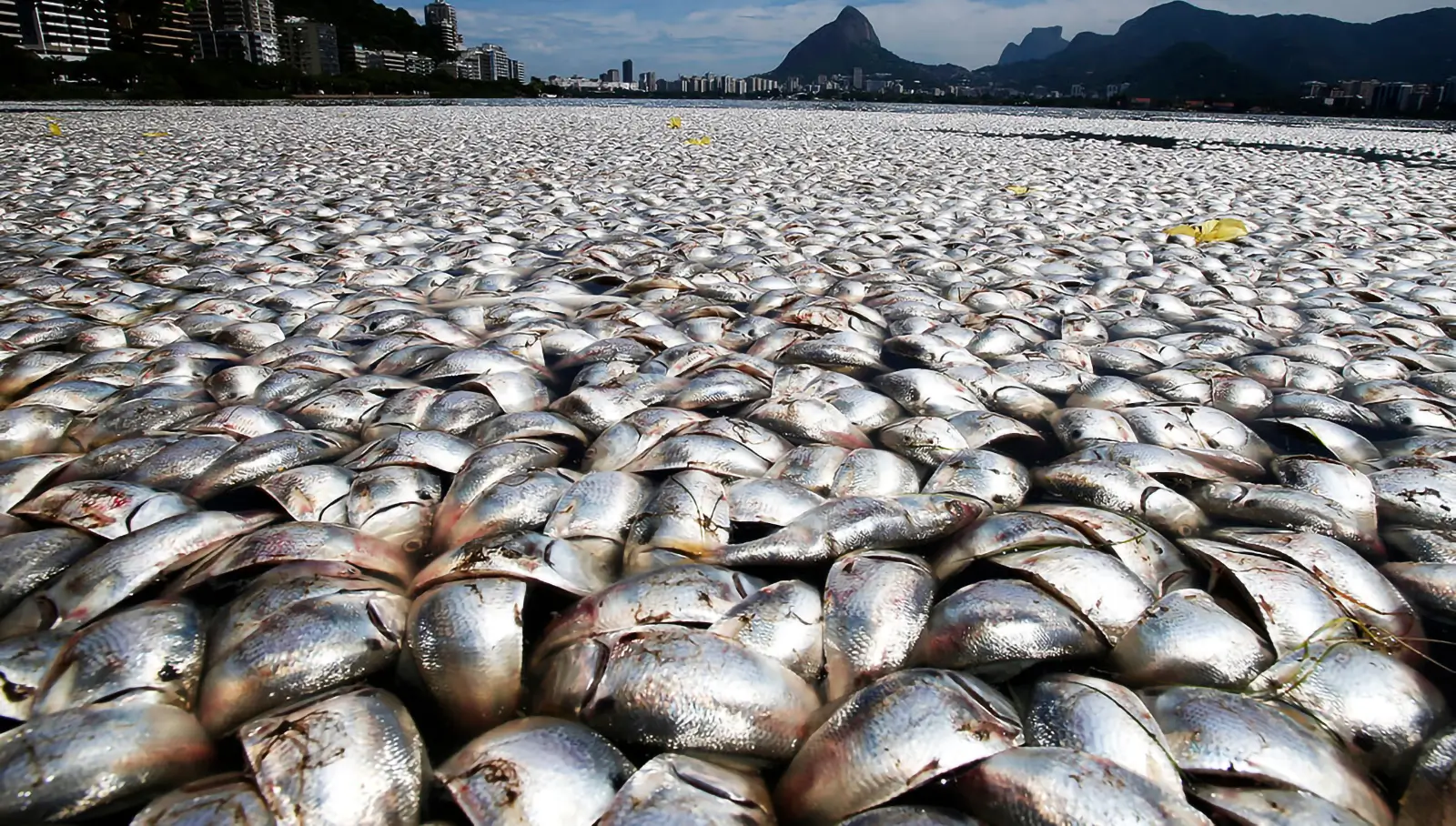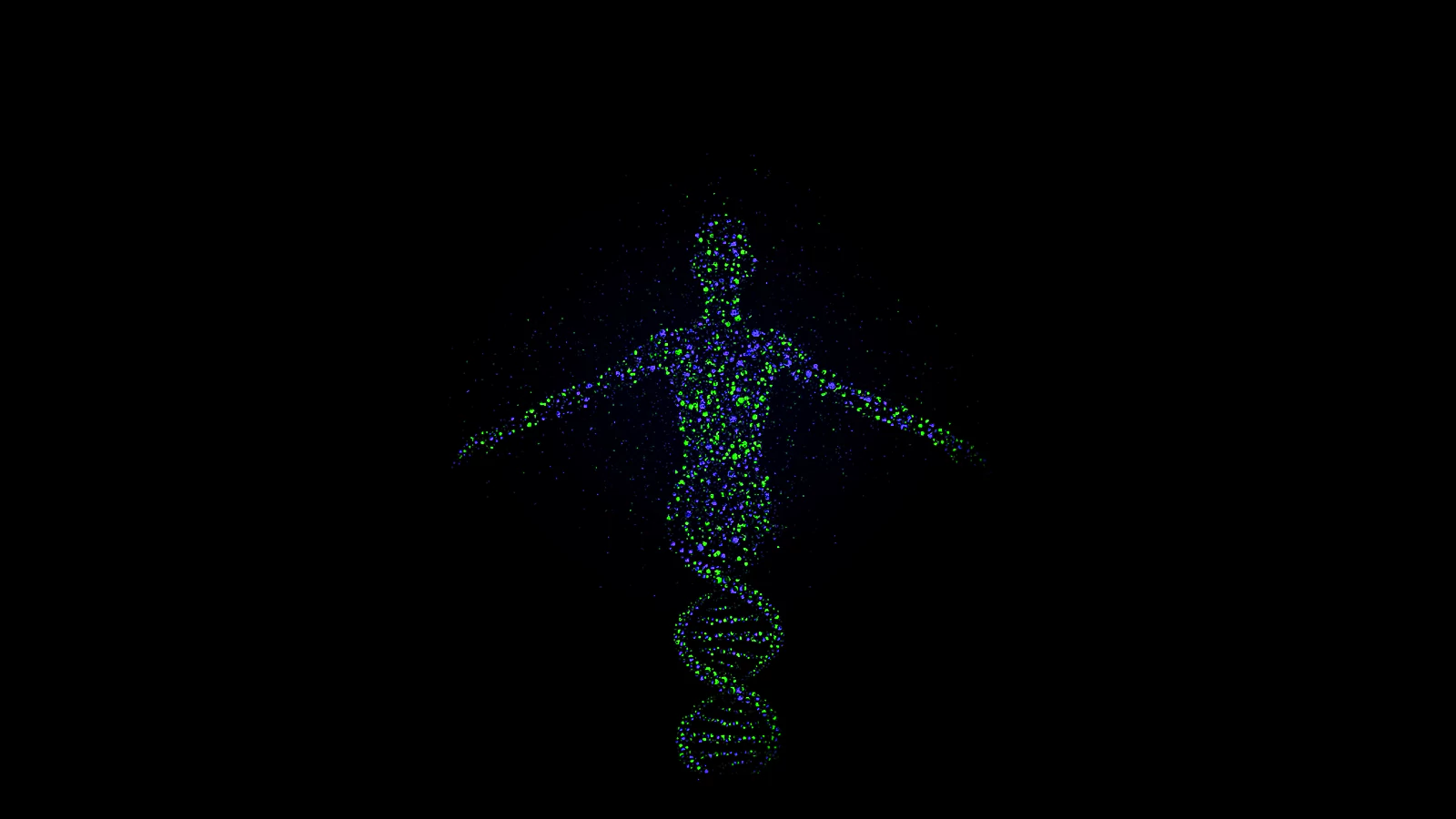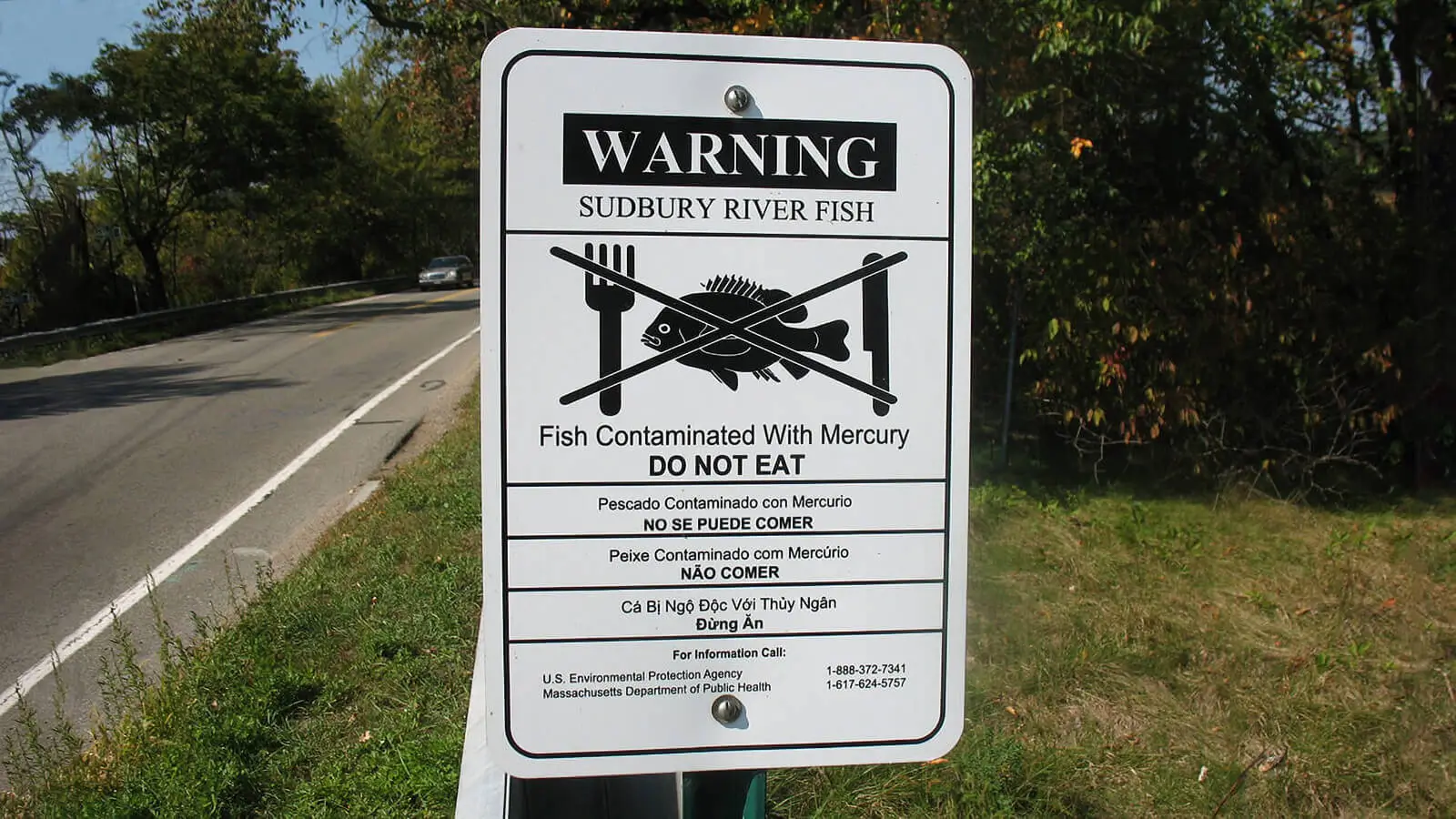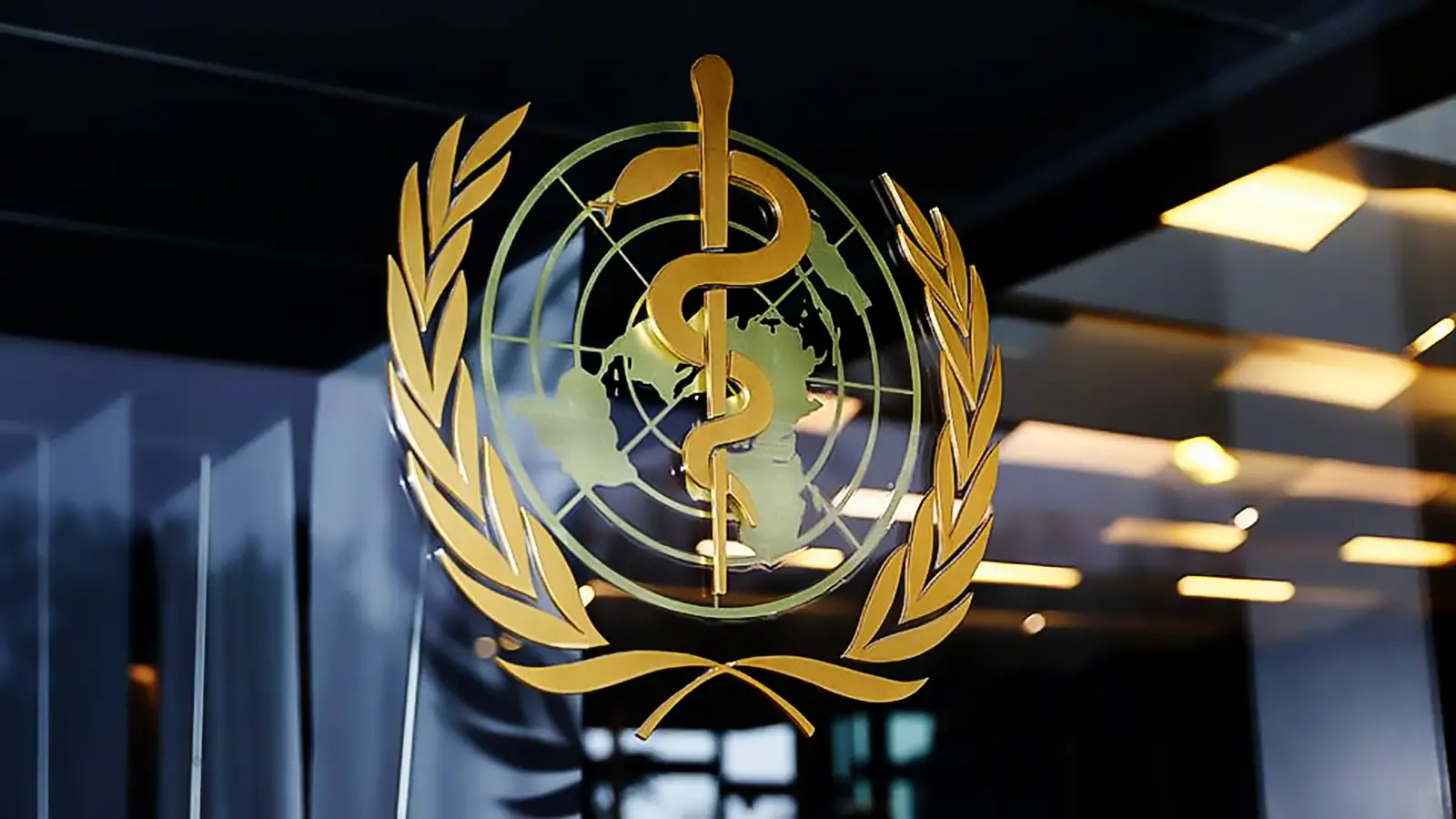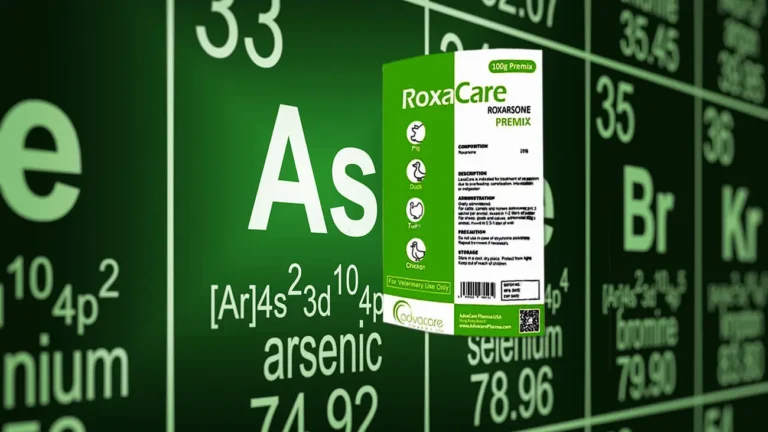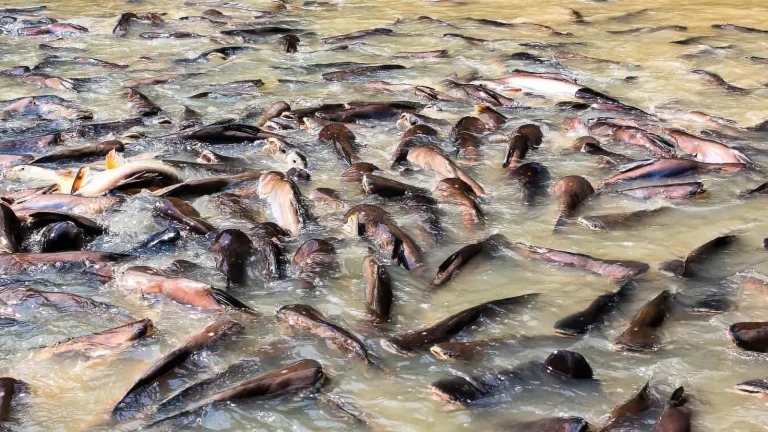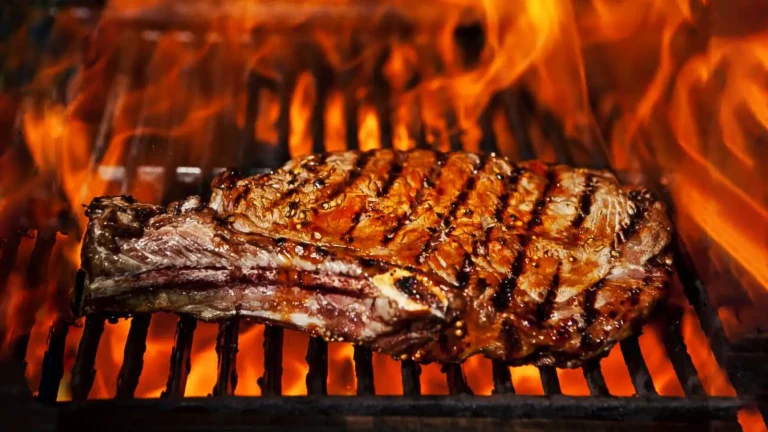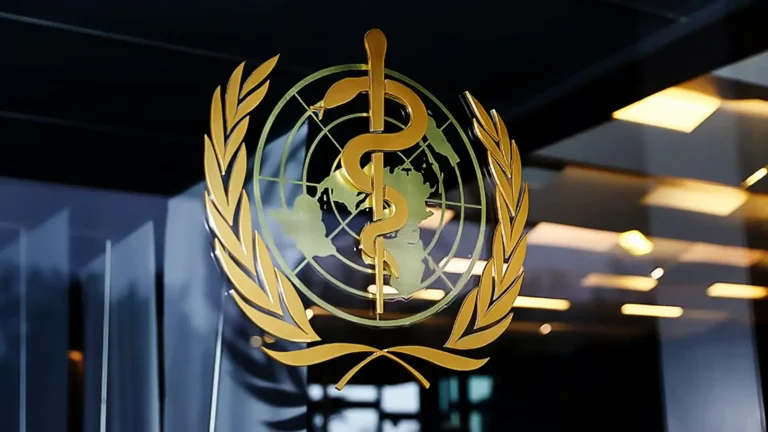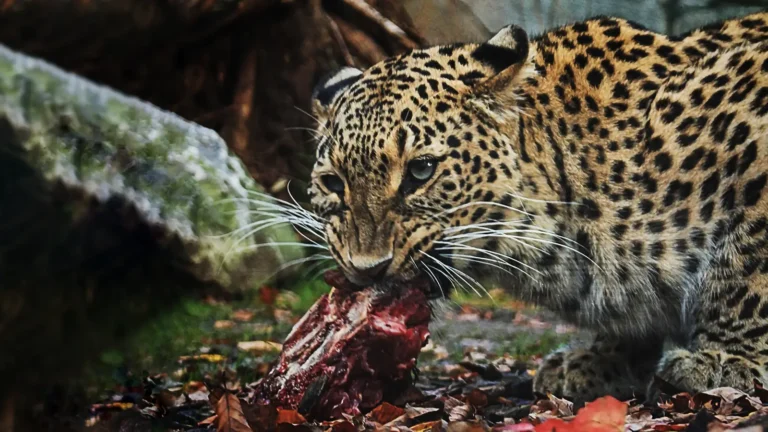Pesticides in Food, Exposure in The Standard American Diet- 80 Percent From Meat
More than 80 percent of pesticides in food exposure in the standard American diet comes from animal products, not from fruits or vegetables.
Milos Pokimica
Written By: Milos Pokimica
Medically Reviewed by: Dr. Xiùying Wáng, M.D.
Updated August 4, 2023The agricultural revolution led to the rise of the human population, and that is not something that can change no matter how much we encourage environment-friendly solutions. One thing, and maybe the only thing we are able to do is to lower our exposure to pollution by going organic and going low on a food chain as much as possible.
Most of the pesticides in food and especially heavy metals and other toxic waste pollutants we get, we get from meat.
There is a misconception that when we clean or wash pesticides from plants we lower our exposure. Most of the pesticide deposits cannot be removed by washing. They are mostly made on an oily base so that rain won’t wash them off. Correct numbers are just a couple of percent overall. Washing the apple removes around 15%, and peeling removes around 85% but also removes most of the nutrition in the peal. If you do not eat organic and most of us do not, then do wash and scrub all produce thoroughly under running water. When you soak, there is no abrasive effect that running water provides. Running water will help remove bacteria (some of them may come from animal feces and be dangerous). There are also toxic chemicals on the surface of fruits and vegetables and dirt from crevices.
However, the real truth is that more than 80 percent of pesticides in food exposure in the standard American diet come from animal products, not from fruits or vegetables.
I do not mean just fish with DDT and mercury accumulation from the ocean. Regular animal fat on farms accumulates toxins in the same manner. Cows, pigs, sheep, and chickens are held in unsanitary and overcrowded conditions that exist on factory farms. To prevent pest infestation, they are directly sprayed with pesticides. Also, they are exposed to a large number of crop pesticides through their food. Animal feed sprayed with pesticides represent the primary source of exposure from pesticides in food. Somehow we forget that all or most of the food that goes to animal feed are sprayed too. This is somehow not angulated by most people. By the estimates of the Environmental Working Group, every year in the U.S. around 167 million pounds of pesticides are just used to grow animal feed. These pesticides are eaten, and then they accumulate in animals. Pesticides are fat-soluble substances so every single gram will be assimilated into the adipose tissue of the animals and will end up on our plates eventually. This can be allowed because there is no restriction in legal terms for pesticides used in animal feed. For instance, the most commonly used pesticide in the world is glyphosate. Legally, residues that are allowed in animal feed are more than 100 times than what is allowed on grains consumed directly by humans. What is even worse is that animals eat enormous amounts of feed during the day and all of the toxins just get concentrated even more. It is a term known as biomagnification in a food chain.
The amount of glyphosate allowed in red meat that you buy in the store is more than 20 times that for most plant crops. There is a wide range of other different substances that agencies don’t even test for. These regulations have nothing to do with preserving public health, and nobody likes to talk about this because you cannot rinse pesticides out of the meat, so this information is kept out of the public.
All of that poison is not going to disappear when we grill our burger magically. Most of the pesticides in the food we will ingest or let’s say most of the people will ingest comes from animal products. Meat cannot be peeled or washed.
This is a quote from the FDA website (click here):
“Do animals eat GMO crops?
More than 95% of animals used for meat and dairy in the United States eat GMO crops. Research shows that eggs, dairy products, and meat from animals that eat GMO food are equal in nutritional value, safety, and quality to foods made from animals that eat only non-GMO food. Studies also show that the health and safety of animals are the same whether they eat GMO or non-GMO foods
When animals eat GMO foods, the DNA in the GMO food does not transfer into the DNA of the animal that eats it. This means that animals that eat GMO food do not turn into GMOs. If the DNA did transfer from food into the animal that eats it, an animal would have the DNA of any food it ate, GMO or not. In other words, cows do not become the grass they eat, and chickens don’t become the corn they eat. Similarly, the DNA from GMO food for animals is not in the meat, eggs, or milk from the animal.
Who makes sure food for animals is safe?
The U.S. Food and Drug Administration (FDA) is the primary regulatory agency responsible for ensuring the safety of GMO and non-GMO food for animals. The FDA Center for Veterinary Medicine manages this responsibility. FDA requires that all food for animals be safe for animals to eat, be produced under clean conditions, contain no harmful substances, and be accurately labeled—similar to the requirements for foods for humans.”
They deliberately don’t want you to know the real truth. All of this is true to some extent but irrelevant. The reason animals eat GMOs in the first place is because GMO corn can be sprayed with Roundup and other more potent pesticides. Nutritional value is not the same as in organic farming, commercial land is depleted of all minerals, but even if it is, you will still eat all of those fat-soluble pesticides that will accumulate in the fat of the animals. We will see in other articles just how much of the toxic overload Americans are exposed to in real life. Something FDA doesn’t like to talk about because then they will no longer be able to protect their big industries. They like to call their GMO marketing initiative “Feed Your Mind” (www.fda.gov/feedyourmind).
There is also something called cannibalistic feed biomagnification. Mercury is not just in fish. We feed a fish meal to other farm animals. Even to the cattle. Farmers discovered that if they feed animal protein to the cattle by mixing it with other plant food sources, cattle tend to grow more and produce more milk. It is not just humans that can eat animal protein all plant-eaters can eat animal protein if the protein is first heated and treated even grazers. Psychologically we think we are omnivores because we can eat thermally processed meat but that is not the case. If you do not believe me here is one study (Atwal et al., 1992). This study’s conclusion was:
“There seems to be a good reason to feed a good quality protein like a fish meal to cows producing more than 30 kg/d of milk.”
Fish-eating cows produce milk that has no aftertaste, so yes this study was a success. Except for mercury. We get saturated fat from milk and meat and all of the rest of the bad stuff, and as surplus, we also get mercury from fish in the milk of the cows too.
When we test all of the food products for toxic pollution levels, number one is fish number two is chicken. The two “healthy” types of meat. Cheese comes the third. Worst than butter or bacon.
We also feed all of the slaughterhouse waste products of animals to other animals. Because of cannibalism the pollutants just circle around.
The economically well-designed but extremely toxic trend among affluent countries is to feed any animal byproducts that cannot be eaten by humans to poultry and ruminants (herbivores such as sheep, cows, and goats). In industry, nothing is wasted including bones, manure, blood, heads, and so on. Most of it goes to dog food or animal food. All of the blood, bones and even roadkill corpses, supermarket waste meat, anything from the city shelter, work animals, euthanized pets, and any protein no matter how decaying are grounded together, then heated to sterilize them, then dried, and then used as animal feed. It is all part of the rendering business.
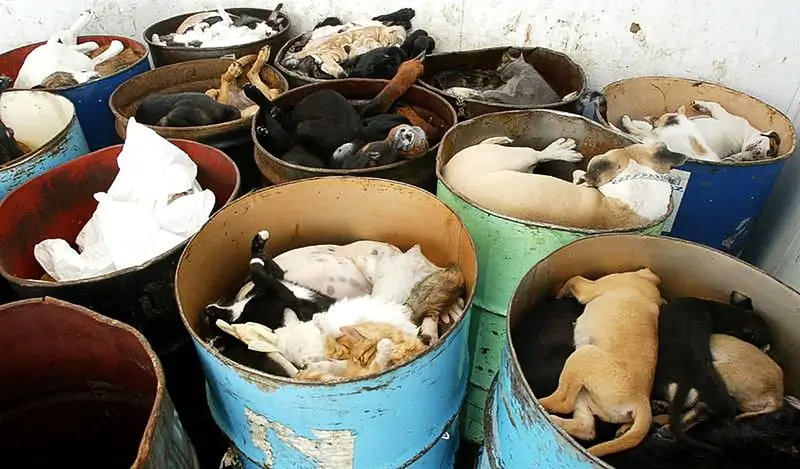
Inedible dead animals and that means all of them including dogs and cats and other dead pets like reptiles, insects, or anything that is no longer alive, end up in feed used to fatten up future generations of their own kind. Protein is a protein. What cannot be used as animal feed or in other words that can be extracted for more expensive products will end up transmogrified into rubber, car wax, paint, and industrial lubricants. Some of it even goes to animal feed for chicken or fish farms and will not be used for pallets for pets meaning it will end up eventually on our own kitchen table. Most of the toxins that are thermostable will persist from one species to another. Prion disease is one good example of what can come out of this (Mad cow disease). Not only are harmful prions found in the meats of animals, all other pollutants just get passed from one animal to another and eventually will end up on our own plate.
People have a hard time with this data so let us look at some studies.
For example, if we look at perfluorooctane sulfonates almost all of it comes from meat and fish (Kannan et al., 2004).
In this study, they measured the levels of the dietary influx of PCBs and organochlorine pesticides for children and adults (Fromberg et al., 2011). For PCP it was the number one fish than meat, fats, cheese, dairy, eggs poultry. For DDT it was fish, meat, fat, dairy, cheese, and eggs. For HCB (hexachlorobenzene) it was the same. These substances are fat-soluble and are in the environment and they bioaccumulate in the food chain.
What about Dioxins?
Every five years, the US government releases a report about the number of dioxins in the food supply because they have to by law. This type of toxin is fat-soluble and it will also bioaccumulate in the food chain. Dioxins are toxic waste pollutants spewed out into the atmosphere by combustion in different types of industries and will eventually end up in the ocean for eternity to come. So the fish is number one and number two would be eggs, and then the rest of the meats. The problem is that in America the entire population is well above the upper tolerable exposure limit for both PCP and Dioxins set by the cancer prevention board in every age group (Lorber et al., 2009). The situation can become much worse if you want to become pregnant.
And these would be just a couple of substances I use as an example. The number of pesticides in food and environmental toxins we are exposed to is outstanding. There is a “dirty dozen” list but the real number is in the hundreds. Maybe even thousands. There is no real science in all of these chemicals yet. There are too many of them and nobody wants to do research because that will make a business more expensive.
One more false narrative is that somehow grass-fed beef is healthier and less polluted and in a logical sense it should be. The only problem is that when tested for carcinogenicity because our world by now is so polluted even that organically grown meat was shown to be only marginally less carcinogenic. Today only real organic meat would be wild game meat but this has to be a subject for another article.
References:
- Gilbert, J. (2005). Environmental contaminants and pesticides in animal feed and meat. Improving the Safety of Fresh Meat, 132-155. https://doi.org/10.1533/9781845691028.1.132
- LeDoux M. (2011). Analytical methods applied to the determination of pesticide residues in foods of animal origin. A review of the past two decades. Journal of chromatography. A, 1218(8), 1021–1036. https://doi.org/10.1016/j.chroma.2010.12.097
- Atwal, A. S., & Erfle, J. D. (1992). Effects of feeding fish meal to cows on digestibility, milk production, and milk composition. Journal of dairy science, 75(2), 502–507. https://doi.org/10.3168/jds.S0022-0302(92)77787-X
- Kannan, K., Corsolini, S., Falandysz, J., Fillmann, G., Kumar, K. S., Loganathan, B. G., Mohd, M. A., Olivero, J., Van Wouwe, N., Yang, J. H., & Aldoust, K. M. (2004). Perfluorooctanesulfonate and related fluorochemicals in human blood from several countries. Environmental science & technology, 38(17), 4489–4495. https://doi.org/10.1021/es0493446
- Fromberg, A., Granby, K., Højgård, A., Fagt, S., & Larsen, J. (2011). Estimation of dietary intake of PCB and organochlorine pesticides for children and adults. Food Chemistry, 125(4), 1179-1187. https://doi.org/10.1016/j.foodchem.2010.10.025
- Lorber, M., Patterson, D., Huwe, J., & Kahn, H. (2009). Evaluation of background exposures of Americans to dioxin-like compounds in the 1990s and the 2000s. Chemosphere, 77(5), 640–651. https://doi.org/10.1016/j.chemosphere.2009.08.016
Related Posts
Do you have any questions about nutrition and health?
I would love to hear from you and answer them in my next post. I appreciate your input and opinion and I look forward to hearing from you soon. I also invite you to follow us on Facebook, Instagram, and Pinterest for more diet, nutrition, and health content. You can leave a comment there and connect with other health enthusiasts, share your tips and experiences, and get support and encouragement from our team and community.
I hope that this post was informative and enjoyable for you and that you are prepared to apply the insights you learned. If you found this post helpful, please share it with your friends and family who might also benefit from it. You never know who might need some guidance and support on their health journey.
– You Might Also Like –

Learn About Nutrition
Milos Pokimica is a doctor of natural medicine, clinical nutritionist, medical health and nutrition writer, and nutritional science advisor. Author of the book series Go Vegan? Review of Science, he also operates the natural health website GoVeganWay.com
Medical Disclaimer
GoVeganWay.com brings you reviews of the latest nutrition and health-related research. The information provided represents the personal opinion of the author and is not intended nor implied to be a substitute for professional medical advice, diagnosis, or treatment. The information provided is for informational purposes only and is not intended to serve as a substitute for the consultation, diagnosis, and/or medical treatment of a qualified physician or healthcare provider.NEVER DISREGARD PROFESSIONAL MEDICAL ADVICE OR DELAY SEEKING MEDICAL TREATMENT BECAUSE OF SOMETHING YOU HAVE READ ON OR ACCESSED THROUGH GoVeganWay.com
NEVER APPLY ANY LIFESTYLE CHANGES OR ANY CHANGES AT ALL AS A CONSEQUENCE OF SOMETHING YOU HAVE READ IN GoVeganWay.com BEFORE CONSULTING LICENCED MEDICAL PRACTITIONER.
In the event of a medical emergency, call a doctor or 911 immediately. GoVeganWay.com does not recommend or endorse any specific groups, organizations, tests, physicians, products, procedures, opinions, or other information that may be mentioned inside.
Editor Picks –
Milos Pokimica is a health and nutrition writer and nutritional science advisor. Author of the book series Go Vegan? Review of Science, he also operates the natural health website GoVeganWay.com
Latest Articles –
Top Health News — ScienceDaily
- The invisible microbes that help keep us healthyon January 4, 2026
Not all microbes are villains—many are vital to keeping us healthy. Researchers have created a world-first database that tracks beneficial bacteria and natural compounds linked to immune strength, stress reduction, and resilience. The findings challenge the long-standing obsession with germs as threats and instead highlight the hidden health benefits of biodiversity. This shift could influence everything from urban design to environmental restoration.
- A smarter way to screen for breast cancer is emergingon January 4, 2026
A groundbreaking study shows that breast cancer screening works better when it’s personalized. Instead of annual mammograms for all, women were screened based on genetics, health history, and lifestyle factors. This approach reduced advanced cancers without increasing risk for those screened less often. Most women preferred the personalized model, hinting at a major shift in future screening guidelines.
- Breakthrough obesity drugs are here but not for everyoneon January 4, 2026
UK experts are warning that access to new weight-loss drugs could depend more on wealth than medical need. Strict NHS criteria mean only a limited number of patients will receive Mounjaro, while many others must pay privately. Researchers say this risks worsening existing health inequalities, especially for groups whose conditions are often missed or under-diagnosed. They are calling for fairer, more inclusive access before gaps in care widen further.
- Type 2 diabetes physically changes the human heart, study findson January 4, 2026
Type 2 diabetes doesn’t just raise the risk of heart disease—it physically reshapes the heart itself. Researchers studying donated human hearts found that diabetes disrupts how heart cells produce energy, weakens the muscle’s structure, and triggers a buildup of stiff, fibrous tissue that makes it harder for the heart to pump. These changes are especially severe in people with ischemic heart disease, the most common cause of heart failure.
- Scientists found a way to help aging guts heal themselveson January 4, 2026
Researchers have discovered a way to help aging intestines heal themselves using CAR T-cell therapy. By targeting senescent cells that build up over time, the treatment boosted gut regeneration, reduced inflammation, and improved nutrient absorption in mice. It even helped protect the intestine from radiation damage, with benefits lasting up to a year. Early results in human intestinal cells suggest the approach could one day improve gut health in older adults and cancer patients.
- A weak body clock may be an early warning for dementiaon January 4, 2026
Your daily rhythm may matter more for brain health than previously thought. Older adults with weaker, more disrupted activity patterns were far more likely to develop dementia than those with steady routines. A later daily energy peak was also linked to higher risk. The study points to the body clock as a possible early warning sign for cognitive decline.
- The hidden timing system that shapes how you thinkon January 3, 2026
The brain constantly blends split-second reactions with slower, more thoughtful processing, and new research shows how it pulls this off. Scientists discovered that brain regions operate on different internal clocks and rely on white matter connections to share information across these timescales. The way this timing is organized affects how efficiently the brain switches between activity patterns tied to behavior. Differences in this system may help explain why people vary in cognitive ability.
PubMed, #vegan-diet –
- Vegetarian Dietary Patterns for Adults: A Position Paper of the Academy of Nutrition and Dieteticson December 31, 2025
It is the position of the Academy of Nutrition and Dietetics that, in adults, appropriately planned vegetarian and vegan dietary patterns can be nutritionally adequate and can offer long-term health benefits such as improving several health outcomes associated with cardiometabolic diseases. Vegetarian dietary patterns exclude meat, poultry, and seafood, and vegan dietary patterns exclude all foods of animal origin. Registered dietitian nutritionists (RDNs) and nutrition and dietetics…
- Impact of alpha-linolenic acid supplementation on long-chain n-3 fatty acid profiles in Western, flexitarian, vegetarian, and vegan dietson December 31, 2025
CONCLUSION: In conclusion, flaxseed oil supplementation combined with a controlled diet effectively improves n-3 LCPUFA status irrespective of habitual diet. The extent of relative improvement was primarily determined by baseline EPA concentrations.
- Academy of Nutrition and Dietetics’ Vegetarian Position Paper Mistakenly Links Vegetarian and Vegan Diets with Vitamin D Deficiencyon December 31, 2025
No abstract
- The effect of a vegan diet with or without resistance exercise on thigh muscle volume in older adults. Research protocol of the Vold-study: a 12-week randomized controlled trialon December 26, 2025
BACKGROUND: Plant-based diets are increasingly adopted. Plant-based foods exhibit a lower protein quantity and quality compared to animal-based foods. As such, a fully plant-based, i.e. vegan, diet may be suboptimal for the maintenance of skeletal muscle mass later in life. The primary objectives of this study protocol are therefore: (1) To assess the effect of a 12-week self-composed vegan diet in comparison to an omnivorous diet on thigh muscle volume in community-dwelling older adults; and…
- Comparing diet-related attitudes, perceptions, and behaviors of vegan and omnivorous adults: results from a cross-sectional survey study in Germanyon December 22, 2025
CONCLUSION: The findings are consistent with and build on existing research on cognitive and behavioral patterns related to a vegan diet, while at the same time yielding some additional insights. In particular, the results on significant differences in the risk-benefit perception of a vegan diet, as well as on motivations and influences regarding the decision to follow a vegan diet provide an important basis for the development of public health interventions and a foundation for further […]
Random Posts –
Featured Posts –
Latest from PubMed, #plant-based diet –
- Adjunctive nutritional intervention improves glycaemia and quality of life in dapagliflozin-treated diabetic patientsby Yifan Liu on January 3, 2026
CONCLUSION: Adjunctive nutritional intervention significantly enhances the glycaemic, renal, nutritional and quality-of-life benefits of dapagliflozin in patients with DN, offering a promising integrated therapeutic strategy.
- Effects of incrementally increased plant-based protein intake on gut microbiota and inflammatory-metabolic biomarkers in healthy adultsby Samira Prado on January 2, 2026
Shifting to a plant-based diet naturally alters protein source choices. In many countries, protein from yellow pea is widely used as a main ingredient in meat alternatives. Still, its biological effects, especially regarding gastrointestinal health, remain incompletely understood. The aim of our study was to investigate how a weekly increase in the intake of a well-characterized pea protein isolate affects surrogate markers of health, fecal short-chain fatty acids and gut microbiota […]
- Uric acid levels mediate the association between four dietary indices and kidney stones in US adults: A cross-sectional study of NHANES 2007-2018by Jinlong Cao on January 2, 2026
CONCLUSION: Healthy dietary patterns are associated with a reduced risk of kidney stones, partially mediated by uric acid levels.
- Nutritional Assessment of Pesticide-associated Metabolic Stress in Plant-based Dietsby Ramona Alina Tomuța on January 2, 2026
CONCLUSION: These findings suggest that chronic dietary pesticide exposure – even at regulatory-compliant levels – may produce a consistent metabolomic signature, particularly when at least five different pesticide, herbicide, or fungicide residues are simultaneously detected, highlighting the potential for cumulative biological effects characterized by oxidative stress, detoxification pathway strain, gut microbiome disruption, and mitochondrial impairment. This underscores the need for…
- The impact of diet and gut microbiota on development, treatment, and prognosis in prostate cancerby Guanmo Liu on January 1, 2026
Prostate cancer (PCa) progression is driven by a complex interplay of factors, including genetics, lifestyle, and environmental influences. Diet and gut microbiota have emerged as pivotal cancer development and treatment response modulators. This review delves into the intricate relationship between dietary modifications and gut microbiota, and their combined impact on PCa progression. Diets abundant in plant-based foods, fiber, and prebiotics promote beneficial gut microbiota profiles that…
- Adherence to healthy dietary patterns and risk of premature aging in adult survivors of childhood cancer in the St. Jude Lifetime Cohort Studyby Tuo Lan on January 1, 2026
CONCLUSION: Adherence to a healthy diet may contribute to reducing the premature aging risk in adult survivors of childhood cancer. Interventions that support healthy eating in this population could potentially have benefits for long-term health outcomes.
